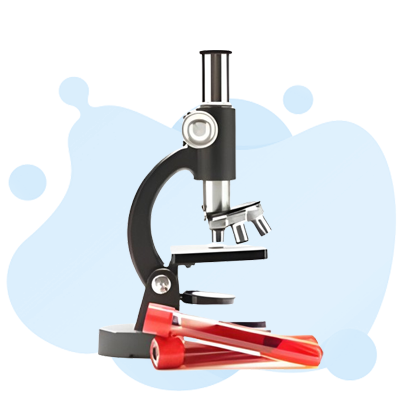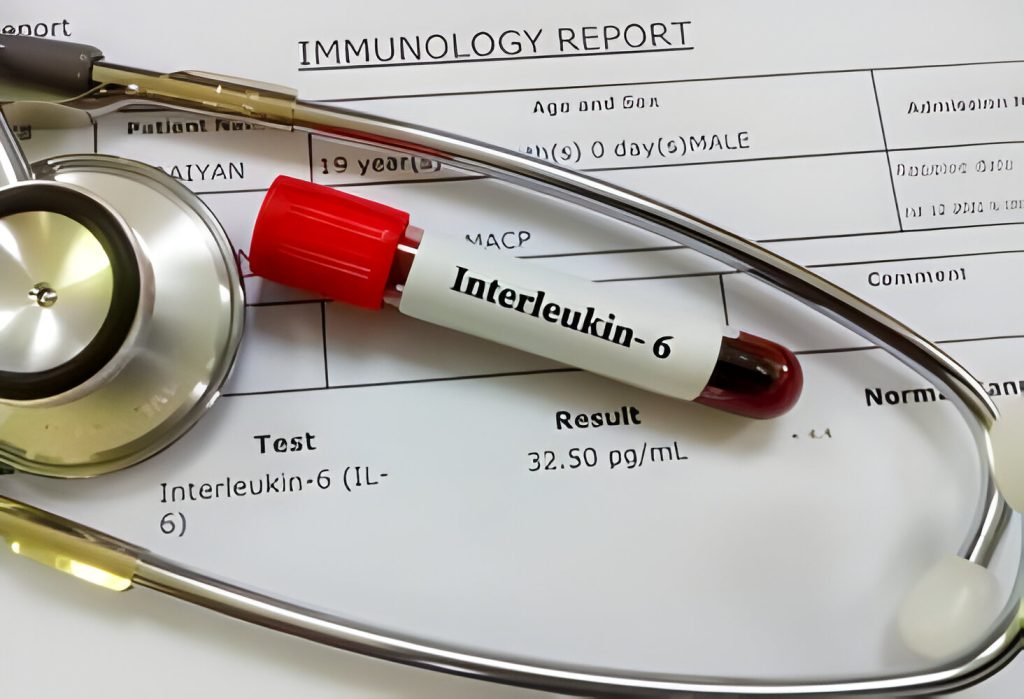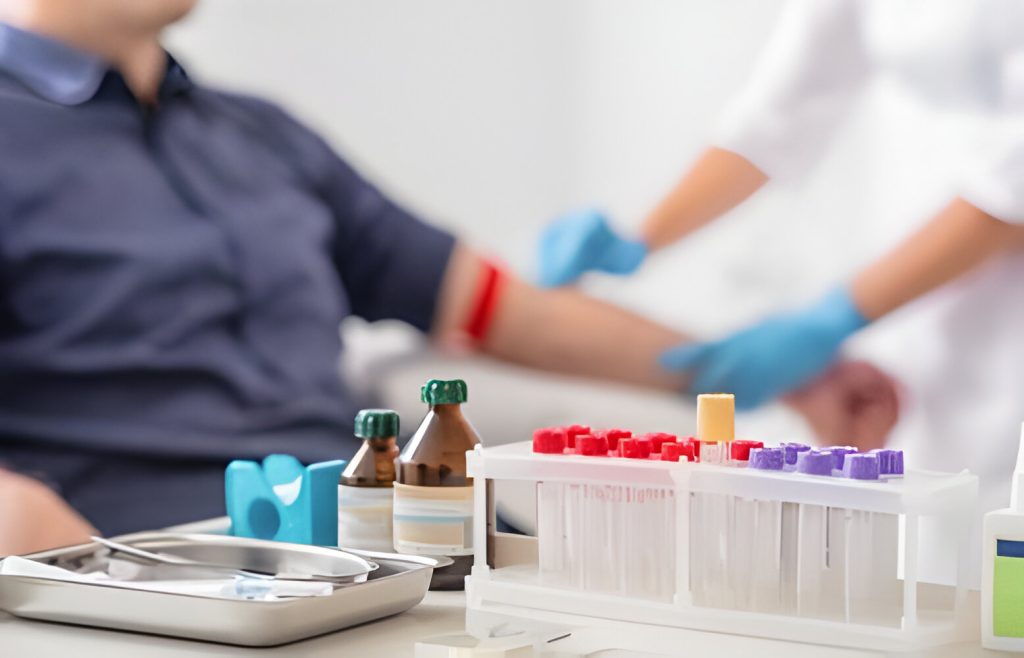LST (Lymphocyte Stimulation Test): Detect Immune Reactions

The Lymphocyte Stimulation Test (LST) is a key test for checking immune reactions. It helps find out if the body is sensitive to certain allergens. This makes it useful for diagnosing allergies and planning custom treatments. This test looks at how lymphocytes, a type of white blood cell, react in the lab. It checks if the immune system doesn’t work as it should. Doctors use the LST alone or with other tests. They do this to understand if a person has a problem with their immune system. Or to see how well their body can fight off germs.
In this test, doctors mix lymphocytes with certain substances. Then they watch to see if the lymphocytes grow. This growth is measured by adding a special kind of radioactive material. If the growth is more than 3 times what was expected, it means the immune system is working hard.
Free LST Practice Test Online
Key Takeaways
- The Lymphocyte Stimulation Test (LST) assesses the ability of lymphocytes to respond to an activation stimulus in vitro.
- The LST is mostly performed in specialist laboratories, primarily in university and research establishments.
- A stimulation index (SI) greater than 3 is generally considered a significant result in the LST.
- The LST can be used to investigate suspected immunodeficiency and assess specific immune responses.
- The LST is a valuable tool for allergy diagnosis and personalized immunotherapy.
Understanding the Lymphocyte Stimulation Test (LST)
The lymphocyte stimulation test (LST) checks how well lymphocytes, a type of white blood cell, react to an activation stimulus. Doctors use it to look for issues with the immune system. It helps identify both major and minor problems. It also shows how the immune system reacts to certain substances.
What is the Lymphocyte Stimulation Test?
This test measures how much lymphocytes grow after being exposed to something that activates them. For example, this could be a certain protein or a plant product. The results give doctors a view of the overall health of the immune system. They can learn about specific immune reactions. This includes the growth of T cells, which are crucial for immune response. Labs at universities or research centers usually do this test.
Assessing Immune Function with LST
The LST helps find problems with the immune system’s first and second lines of defense. Lymphocytes are mixed with certain substances, like ConA. Then, growth is measured by how much they take up a labeled chemical. A high growth means the immune system is working well in that area. Doctors look at a specific number, called the stimulation index. If it’s over 3, it’s a good sign.
Applications of LST in Diagnosis and Research
This test isn’t just for finding immune system issues. It’s also used to see how well the body responds to vaccines. Scientists use it to understand how certain cells react to different things. They can learn about allergic reactions on a cellular level. This test is mainly for research and not easy to find in regular clinics. But, it’s very useful in studying immune system reactions. Many studies have found it helpful for animals and humans alike.

LST (Lymphocyte Stimulation Test)
Principles and Methodology of LST
The lymphocyte stimulation test (LST) looks at how lymphocytes react to certain triggers like mitogens or antigens. These triggers make the lymphocytes grow in number. Scientists measure this growth by how much radiolabeled thymidine the cells use to make DNA. This test is mainly done in advanced labs in universities or research centers. They use special equipment and skilled people to do it. There are different ways to do the LST, but they often use mitogens like Concanavalin A (ConA) and phytohemagglutinin (PHA).
Interpreting LST Results
LST results come as a stimulation index (SI), which shows how strong the reaction was. If the SI is over 3, it’s usually seen as a good reaction. This test can show if someone’s immune system is weak or if it’s reacting well to a vaccine. A test with mitogens is more general. A test with antigens, though, is very aimed. It looks at how certain types of lymphocytes react to known triggers.
Limitations and Considerations
The LST can’t tell if a problem is because the cells aren’t working well or because they’re held back by other factors. It’s also not easy to find the test outside research locations. Still, the LST is vital in the study of how lymphocytes react in different diseases. It can spot real issues in the immune response.
Researchers use the LST to study immune reactions in horses, too. They look at how the immune system reacts after being vaccinated or when it’s sick. The test shows whether the immune response is weak or if something is stopping it from working well. An LST with antigens can specifically check the response to vaccines. Instead of using radiation, experts measure certain proteins to see the immune response. This method also checks how well certain cells present antigens in the sample.
In one study, a man with ulcerative colitis had a positive LST to a drug called salicylazosuifapyridine (Salazopyrin, SASP). He developed pancreatitis, an inflammation of the pancreas. This situation points to a unique immune reaction, suggesting how the man’s pancreas had an allergic response to the drug. It doesn’t seem to matter how much of the drug he took.
Conclusion
The lymphocyte stimulation test (LST) is a key tool in studying immune system cells outside the body. It helps us with many things, like checking for certain immune system problems. It shows how well the immune system reacts to different things. It also looks at how well certain cells present foreign stuff to the immune system.
Using the LST, we can see immune system activities by a number called a stimulation index. This number helps doctors and researchers follow the immune system’s moves. It’s important for spotting immunological issues. But, the LST isn’t perfect and has its limits. Still, its skill in finding immune reactions is vital for custom treatments and hi-tech ways to fix the immune system.
A study showed that the LST could find that a patient’s immune system reacted strongly to nabumetone at low doses. Meanwhile, tests for histamine release and epicutaneous tests showed negative results in the same patient. This shows how important the LST is for diagnosing and treating complex diseases. As we learn more about in vitro immunology, the LST plays a big part in making healthcare tailored to each person, based on solid data.
